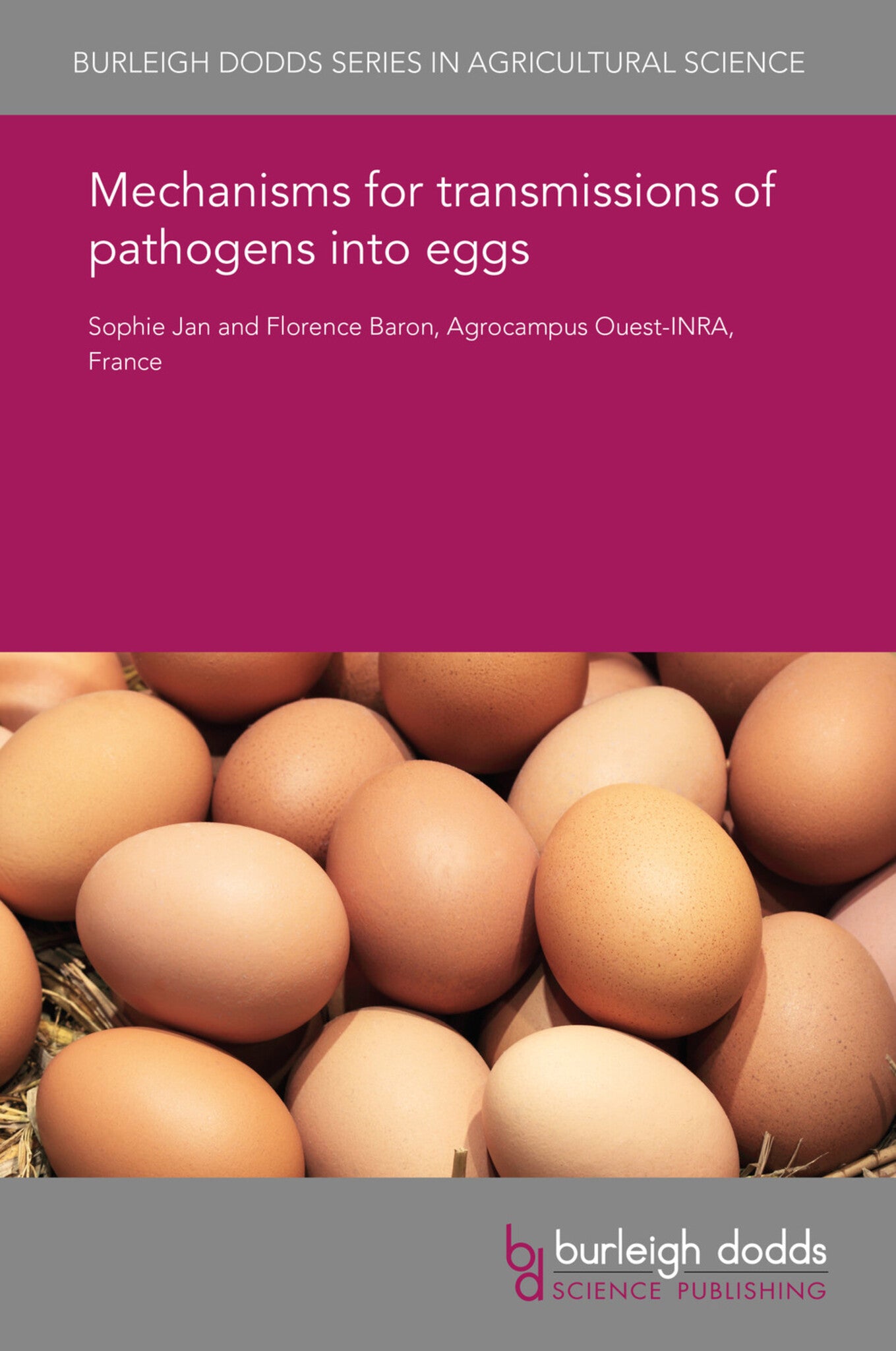We're sorry. An error has occurred
Please cancel or retry.
Mechanisms for the transmission of pathogens into eggs

Some error occured while loading the Quick View. Please close the Quick View and try reloading the page.
Couldn't load pickup availability
- Format:
-
30 April 2017


TECHNOLOGY & ENGINEERING / Agriculture / Sustainable Agriculture, Poultry farming, TECHNOLOGY & ENGINEERING / Agriculture / Animal Husbandry, Sustainable agriculture

1 Introduction 2 Microbial hazards associated with egg consumption 3 Vertical transmission 4 Horizontal transmission 5 Secondary contamination: trans-shell penetration 6 The effect of antimicrobial molecules on the behaviour of microorganisms in egg white 7 The influence of the physicochemical and environmental conditions on the egg white 8 Migration and behaviour of microorganisms in egg yolk 9 Conclusion 10 Where to look for further information 11 References



